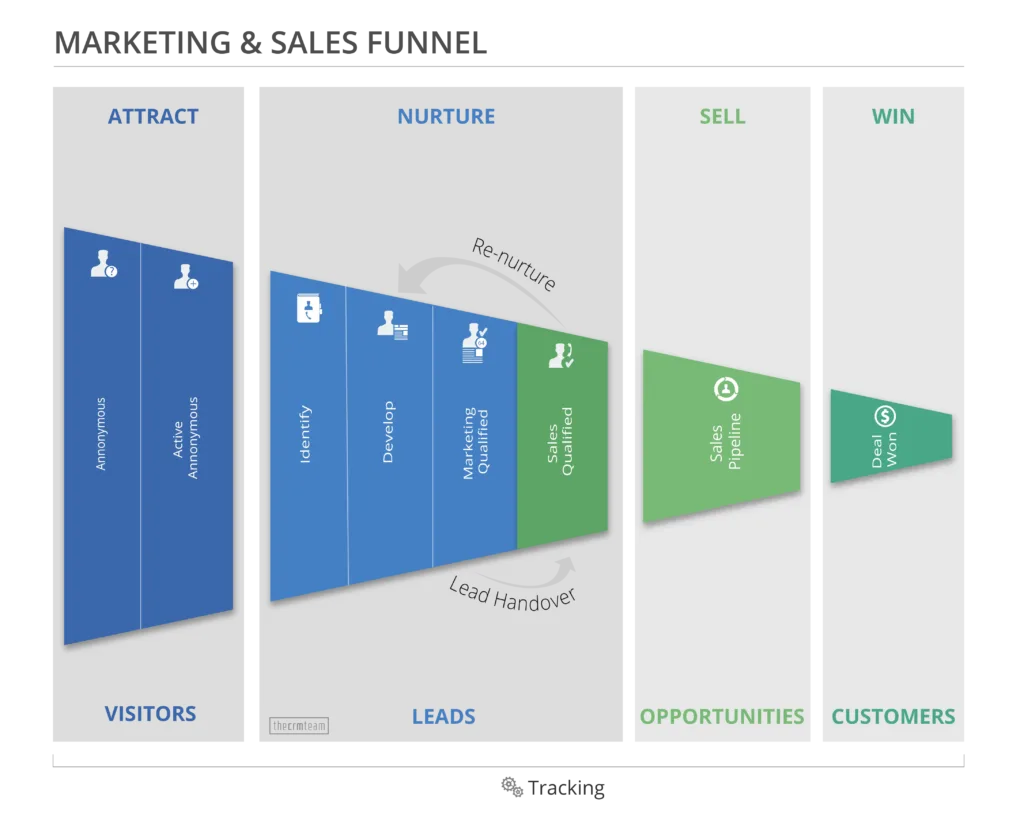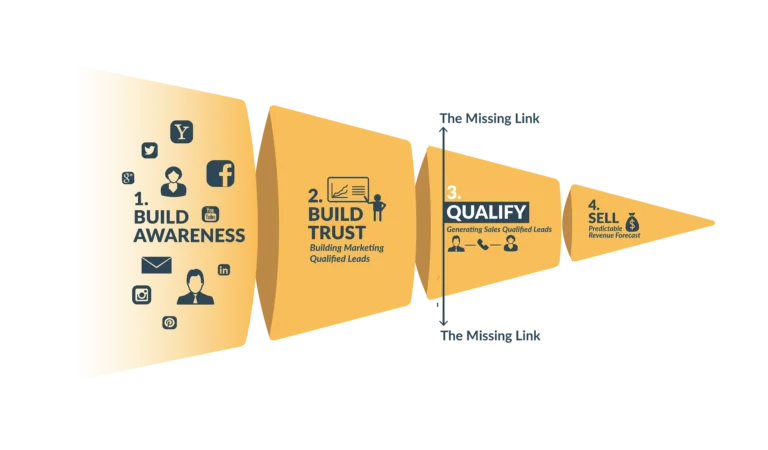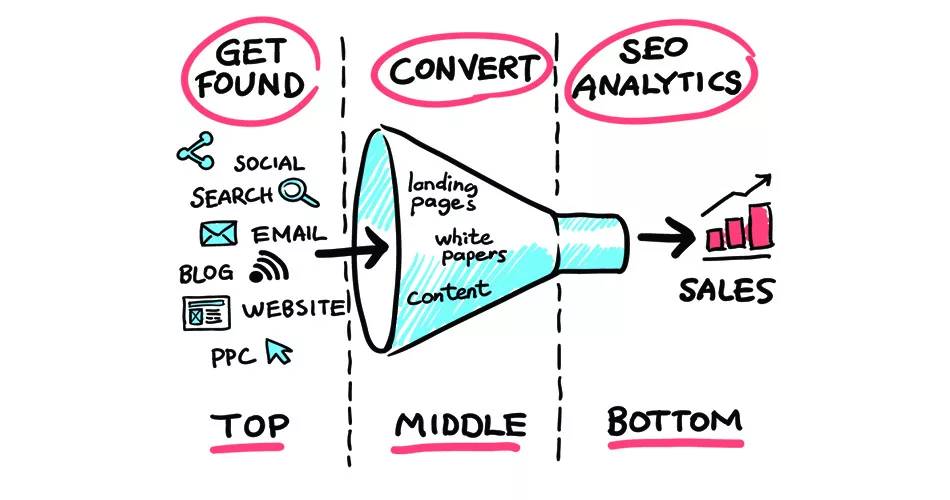Funneling and lead generation are essential for driving business growth. Funneling refers to the process of guiding potential customers through the stages of the customer journey to convert them into paying customers. Lead generation involves attracting and converting potential customers into leads who express interest in your product or service. This guide will provide an overview of funneling, lead generation, and how to implement effective strategies.
Content Overview:-
- What are Funneling and Lead Generation? 🤔
- Why are They Important? 💡
- Types of Funnels 📊
- Building an Effective Funnel 🎯
- Lead Generation Strategies 🚀
- Lead Qualification and Scoring 🔍
- Conversion Optimization 📈
- Lead Nurturing and Follow-Up 💌
- Measurement and Analytics 📊
- Integrating Sales and Marketing 🤝
- Best Practices and Case Studies 🌟
What are Funneling and Lead Generation? 🤔
•Funneling:
A funnel maps the customer journey and the steps potential customers go through to become paying customers. It starts with awareness and interest and ends with purchase and loyalty. The goal of funneling is to optimize the customer experience at each stage to maximize conversions.
Lead generation refers to the process of attracting and converting potential customers into leads. Leads are people who have expressed interest in your business by providing contact information. Lead generation is important for driving sales and revenue growth.
👋 Lead generation and 🚀 funneling work together to drive business growth. Here’s how they combine:
•🎣 Lead generation focuses on attracting potential customers and converting them into leads. Funneling then 🌱 nurtures those leads through the customer journey to become paying customers. So lead generation feeds into the top of the funnel, providing the leads that will progress through the funnel.
•The leads generated through various lead generation tactics like 📝 content marketing, 📱 social media, and 📧 email marketing enter into the initial stages of the funnel, such as awareness and interest. They are then nurtured through the consideration and decision stages of the funnel through lead nurturing campaigns and marketing automation.
•🎯 Lead scoring helps determine which leads should enter into the funnel. Less promising leads may require more initial nurturing before entering the main funnel. The most sales-ready leads can enter directly into the funnel to be converted into customers.
•The ultimate goal of combining lead generation and funneling is to provide a seamless experience for the customer from initial awareness of your product or service through to purchase. 🤝
Why are They Important? 💡
Funneling and lead generation are crucial for business success for several reasons:
•They drive sales and revenue. By optimizing your funnel and generating more high-quality leads, you can significantly increase sales and revenue.
•They enhance customer experience. Providing a seamless experience through the customer journey leads to higher satisfaction, loyalty, and lifetime value.
•They improve marketing ROI. Funneling and lead generation allow you to focus your marketing efforts on strategies that provide the highest return on investment.
•They inform product development. Analyzing how customers interact with your funnel can reveal opportunities for improving or expanding your product line.
•They keep you competitive. In today’s digital world, funnel optimization and lead generation are essential for staying ahead of the competition. Companies that fail to focus on these areas will get left behind.
Types of Funnels 📊

There are several types of funnels used for different business objectives:
•Sales funnels:
Focus on guiding potential customers through the sales process. They start with awareness and end with purchase.
•Marketing funnels:
Used to nurture potential customers through the marketing process, from awareness to interest, consideration, and conversion.
•Conversion funnels:
Designed to optimize specific conversion points, such as signing up for a newsletter, downloading a resource, or making a purchase.
Understanding the purpose of each funnel type helps you map them to your specific business objectives and create tailored strategies.
Building an Effective Funnel 🎯
To create an effective funnel, follow these steps:
- Identify your target audience and buyer personas: Understand who your ideal customers are and create buyer personas to guide your funnel strategy.
- Craft compelling and tailored messaging for each funnel stage: Develop content and messaging that resonates with your audience at each stage of the customer journey.
- Choose the right marketing channels for funnel promotion: Select the most effective channels for reaching your target audience, such as social media, email, or paid advertising.
- Incorporate lead nurturing strategies within the funnel: Implement tactics to engage and nurture leads throughout the funnel, increasing the likelihood of conversion.
Lead Generation Strategies 🚀
Effective lead generation tactics include:
•Content marketing:
Create valuable content that attracts and engages your target audience.
•Social media:
Leverage social platforms to reach and connect with potential customers.
•Email marketing:
Build an email list and send targeted campaigns to nurture leads.
•Lead magnets:
Offer valuable resources, such as ebooks or webinars, in exchange for contact information.
•Landing pages and lead capture forms:
Optimize your website to capture leads effectively.
•Lead generation tools and technologies: Utilize tools like chatbots, pop-ups, and CRM systems to streamline lead generation efforts.
Lead Qualification and Scoring 🔍
To ensure you’re focusing on the most promising leads, implement lead qualification criteria and scoring systems:
•Lead qualification:
Establish criteria to determine if a lead is a good fit for your product or service.
•Lead scoring:
Assign point values to leads based on their behavior and demographic information, helping you prioritize leads for follow-up.
•Align marketing and sales efforts:
Collaborate with your sales team to ensure leads are nurtured effectively and handed off at the right time.
Conversion Optimization 📈
Optimize conversions at each stage of the funnel by:
•Analyzing and optimizing conversion rates:
Monitor key metrics and make data-driven improvements.
•A/B testing and experimentation:
Test different elements of your funnel to identify what works best for your audience.
•Implementing personalized and targeted messaging:
Tailor your messaging to individual leads based on their behavior and preferences.
•Reducing friction and optimizing user experience (UX):
Make it easy for leads to convert by streamlining the process and removing barriers.
Lead Nurturing and Follow-Up 💌
Nurture leads and maintain engagement with effective follow-up strategies:
•Create lead nurturing campaigns:
Develop targeted campaigns to guide leads through the funnel.
•Implement marketing automation:
Use automation tools to send personalized follow-ups based on lead behavior.
•Utilize email marketing and drip campaigns:
Send a series of emails to nurture leads over time.
•Integrate lead nurturing into your CRM strategy:
Track and manage leads within your CRM system to ensure a seamless customer experience.
Measurement and Analytics 📊

Track and measure the success of your funnel and lead generation efforts by:
•Monitoring key metrics:
Track conversion rates, cost per lead, and customer acquisition cost to measure performance.
•Utilizing analytics tools:
Use tools like Google Analytics to analyze funnel performance and identify areas for improvement.
•Implementing data-driven optimizations:
Make adjustments based on your findings to improve results.
•Continuously monitoring and reporting:
Regularly review your performance and share insights with your team.
Integrating Sales and Marketing 🤝
Align your sales and marketing teams to maximize lead generation and funnel success:
•Define shared goals and metrics: Establish common objectives and KPIs to ensure both teams are working towards the same goals.
•Use CRM systems for lead tracking and management: Implement a CRM system to manage leads and facilitate collaboration between sales and marketing.
•Implement closed-loop reporting: Track leads from initial contact through to sale, allowing you to measure the effectiveness of your marketing efforts.
Best Practices and Case Studies 🌟
Learn from successful lead generation and funneling examples by:
•Highlighting industry best practices: Study what works for other businesses and apply those strategies to your own efforts.
•Showcasing innovative approaches: Stay up-to-date with the latest trends and tactics in funneling and lead generation.
•Providing actionable tips and takeaways: Offer practical advice and insights that readers can apply to their own strategies.
We hope this blog post provides a comprehensive overview of Basic concept of websites and hosting. If you have any questions or need further clarification on any of the topics discussed, please let us know, Our team of expert will get back to you. We are here to help our Reader!


